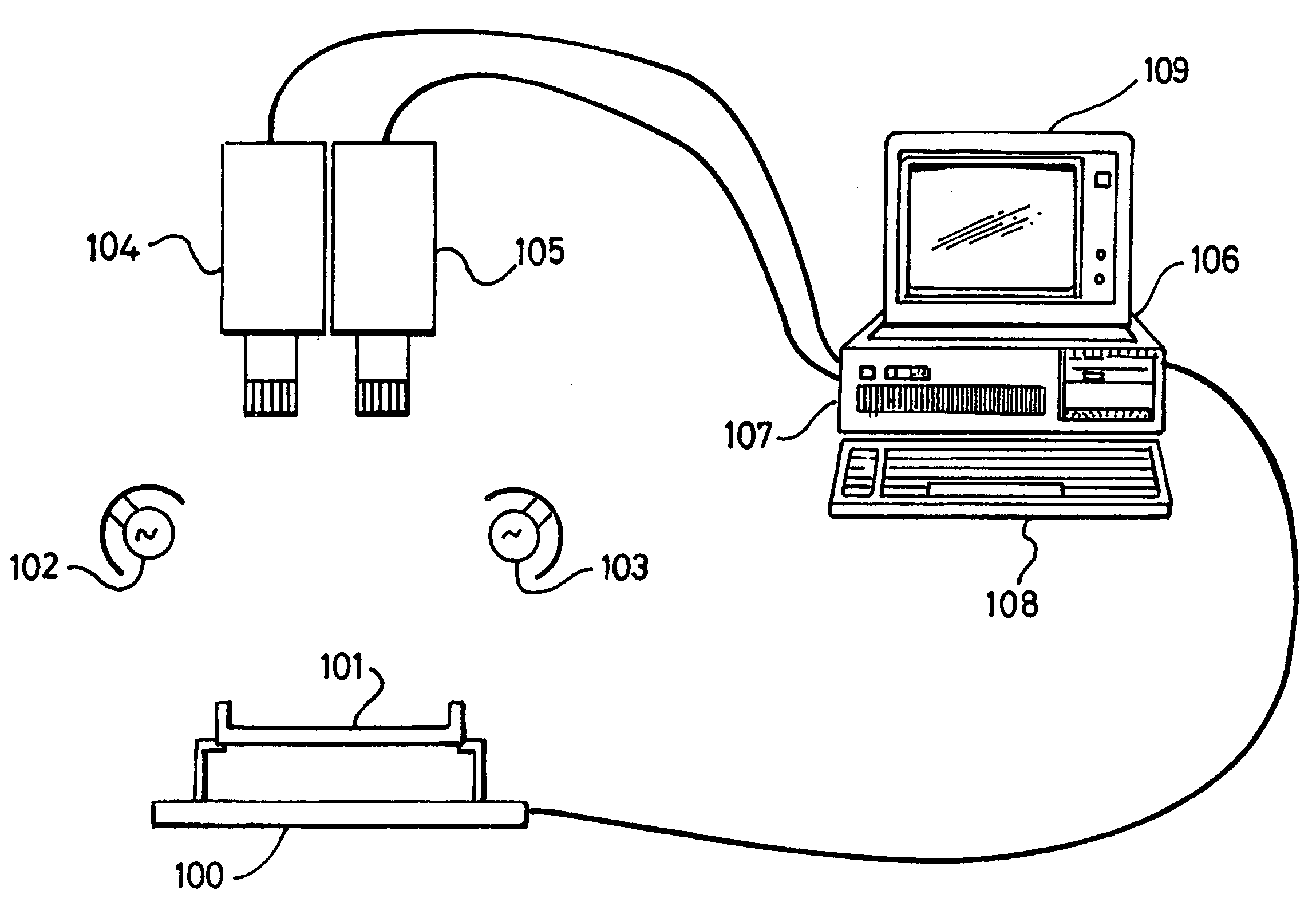Image analysis systems and devices for use therewith
- Summary
- Abstract
- Description
- Claims
- Application Information
AI Technical Summary
Benefits of technology
Problems solved by technology
Method used
Image
Examples
Embodiment Construction
[0030]By way of example only, a system for determining the results of antibiotic susceptibility testing is illustrated in the accompanying drawings and is described in detail below.
1. BRIEF DESCRIPTION OF THE DRAWINGS
[0031]FIG. 1 illustrates the general layout of an AST plate reading system in accordance with the invention.
[0032]FIGS. 2a to 2c show the sequence involved in optically reading a character in the code on an AST disk.
[0033]FIG. 2a shows a typical image of a character as seen by the camera.
[0034]FIG. 2b shows a segmented bit-map of the character.
[0035]FIG. 2c shows a binarised vector representing the character. The character is recognised as an “A”.
[0036]FIGS. 3a to 3c show the stages in correctly orientating the character code by means of an underline.
[0037]FIG. 3a shows a “grey” image of the disk.
[0038]FIG. 3b shows a binary image of the disk code.
[0039]FIG. 3c shows the rotated image of the code.
[0040]FIGS. 4a to 4c show the sequence involved in locating the position o...
PUM
 Login to View More
Login to View More Abstract
Description
Claims
Application Information
 Login to View More
Login to View More - R&D Engineer
- R&D Manager
- IP Professional
- Industry Leading Data Capabilities
- Powerful AI technology
- Patent DNA Extraction
Browse by: Latest US Patents, China's latest patents, Technical Efficacy Thesaurus, Application Domain, Technology Topic, Popular Technical Reports.
© 2024 PatSnap. All rights reserved.Legal|Privacy policy|Modern Slavery Act Transparency Statement|Sitemap|About US| Contact US: help@patsnap.com










